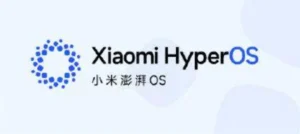Xiaomi HyperOS 2.0: Confirmed Release Date and Anticipated Features

The official release date for Xiaomi HyperOS 2.0 has finally been confirmed, much to the relief of the tech community. As reported by the renowned Weibo blogger, ‘I’m afraid it’s not Xiao Xiaobai,’ the launch will coincide with the first anniversary of its predecessor, HyperOS 1.0. This long-awaited confirmation marks the end of months of speculation and excitement among Xiaomi enthusiasts and tech analysts alike.
Given our successful track record at XiaomiTime with previous predictions, this announcement further bolsters our credibility. The confirmed launch date not only satisfies community anticipations but also strategically aligns with Xiaomi’s broader technological roadmap. By choosing this date, Xiaomi underscores its commitment to a cyclical and timely product release schedule, reinforcing consumer trust and engagement.
The initial timeline for HyperOS 2.0’s release had been a hot topic within the tech forums and news outlets. Users and analysts alike have speculated on various dates and potential delays, often drawing on Xiaomi’s past performance and industry trends. The confirmation validates much of this speculation, simultaneously quelling unfounded rumors and affirming informed predictions.
Community expectations have been particularly high for HyperOS 2.0, as users eagerly await to experience the enhancements and new features promised by Xiaomi. In the lead-up to the official release, discussions have centered around anticipated improvements in user interface, performance optimizations, and expanded functionality. This enthusiasm underlines the importance of community in shaping and responding to product development cycles.
From a strategic standpoint, aligning the launch with the first anniversary of HyperOS 1.0 is a calculated move. It not only commemorates the successes of the initial version but also sets a precedent for consistent and reliable updates. This approach can be seen as a commitment to long-term support and innovation, ensuring that users remain engaged and informed about Xiaomi’s evolving technological ecosystem.
Key Features and Enhancements
Xiaomi HyperOS 2.0 introduces a multitude of enhancements and new features designed to significantly elevate the user experience beyond that of its predecessor. One of the standout improvements is the revamped user interface, which offers a smoother, more intuitive experience. This new design aims to cater to both new and returning users, making navigation more straightforward and interactions more delightful. With a focus on minimalistic yet functional aesthetics, the interface now supports dynamic animations and transitions, ensuring that every touch, swipe, and gesture feels natural and responsive.
Moreover, HyperOS 2.0 has significantly expanded support for Xiaomi’s extensive ecosystem. This comprehensive integration now allows users to effortlessly sync and manage their smartphones, tablets, smartwatches, and a myriad of IoT devices. From smart home appliances like air purifiers and security cameras to wearable gadgets, the enhanced compatibility offers a unified control center, facilitating a more seamless and interconnected living environment. The system’s ability to intelligently connect and communicate across devices ensures users can perform tasks with greater efficiency and convenience.
Another crucial enhancement is the optimization of performance and battery life. Through sophisticated software algorithms, HyperOS 2.0 intelligently allocates resources and prioritizes tasks, ensuring a lag-free experience even during demanding usage scenarios. Concurrently, the OS’s advanced power management features extend battery life by optimizing background processes and reducing idle power consumption. Security has also been substantially upgraded, with enhanced privacy controls and real-time threat detection features designed to protect user data and ensure peace of mind.
In addition, HyperOS 2.0 brings improved multi-tasking capabilities and enhanced app management, empowering users to easily switch between and manage multiple applications without experiencing slowdowns. Users can expect a more fluid interaction, with minimized interruptions and faster load times. Overall, Xiaomi HyperOS 2.0 sets a new benchmark in delivering a refined, cohesive, and intelligent mobile operating system that seamlessly integrates with various aspects of daily life.
In-Depth Feature Analysis
Xiaomi’s HyperOS 2.0 is poised to elevate the user experience through a multitude of enhancements meticulously designed to redefine modern smartphone utility. Central to this update is the revamped user interface, which promises a more intuitive, streamlined interaction. The visual design has been thoughtfully re-engineered to incorporate a minimalist aesthetic, thereby reducing clutter and enabling smoother navigation across applications. This iterative approach ensures that users are greeted with a more engaging visual environment without compromising on functionality.
System optimization is another pillar of HyperOS 2.0. Leveraging advanced memory management and performance algorithms, Xiaomi has managed to significantly boost the operating system’s efficiency. Users can expect improved multitasking capabilities, with quicker app launches and reduced instances of system lag. The integration of AI-powered features further enhances system responsiveness by dynamically allocating resources based on usage patterns.
Device integration also sees a notable upgrade. HyperOS 2.0 enhances interoperability between Xiaomi devices, including smartphones, tablets, wearables, and smart home products. The unified ecosystem allows for seamless data sharing and device synchronization, bolstering a truly interconnected experience. For instance, users can easily transfer multimedia files between devices or control home automation systems directly from their smartphones, creating a cohesive technological environment.
Performance enhancements round out the suite of improvements introduced in HyperOS 2.0. The operating system now fully supports the latest hardware advancements, including high-refresh-rate displays and advanced camera sensors. Gaming performance has been bolstered through optimized GPU drivers and enhanced thermal management, ensuring a lag-free and immersive experience. Battery life management has been fine-tuned to extend usage time, making it possible to get the most out of the device on a single charge.
With the confirmed release date drawing near, the excitement surrounding HyperOS 2.0 is palpable. Users can anticipate a holistic enhancement to their mobile experience, driven by significant improvements in user interface, system optimization, device integration, and performance. These advancements illustrate Xiaomi’s commitment to pushing the boundaries of smartphone technology.
Future Insights and Expectations
The release of HyperOS 2.0 is critical for Xiaomi, ushering in a new era for both the company and its user base. With this advancement, Xiaomi aims to solidify its footing in the competitive tech market, thereby enhancing its reputation and expanding its market share. HyperOS 2.0 is anticipated to significantly impact Xiaomi’s market position, offering enhancements in device management, productivity, and overall user satisfaction.
Xiaomi’s community of users can look forward to a seamless integration of HyperOS 2.0 across various devices. The operating system promises to streamline device management, ensuring smooth communication and interoperability between smartphones, tablets, and smart home devices. Enhanced productivity features will likely be a central focus, equipping users with more efficient tools and applications to streamline their digital lives. These improvements are expected to contribute to a heightened user experience, fostering loyalty among existing customers while attracting new users to the Xiaomi ecosystem.
In terms of productivity, HyperOS 2.0 is set to introduce advanced multitasking capabilities and AI-driven optimizations. Enhanced AI functionalities will not only improve device performance but also customize user interactions, offering a more personalized and intuitive experience. Users can expect faster response times, improved battery efficiency, and an overall increase in device longevity.
As we consider future versions of HyperOS, it is plausible to expect a continuous stream of updates that build upon the robust foundation laid by HyperOS 2.0. Subsequent updates may introduce additional AI enhancements, greater integration with emerging technologies like 5G and IoT, and augmented reality features tailored for both entertainment and practical applications. While the specifics of these updates remain speculative, the trajectory for Xiaomi’s operating system suggests a focus on progressive innovation and user-centric enhancements.
Xiaomi fans and tech enthusiasts can anticipate comprehensive reviews and ongoing updates following the rollout of HyperOS 2.0. As this milestone marks a significant evolution in Xiaomi’s OS development, its real-world application and reception will be pivotal in shaping future iterations of the software. This blog post aims to equip readers with a foundational understanding of what to expect, setting the stage for a potentially transformative shift in Xiaomi’s technological landscape.








4 thoughts on “Xiaomi HyperOS 2.0: Confirmed Release Date and Anticipated Features”